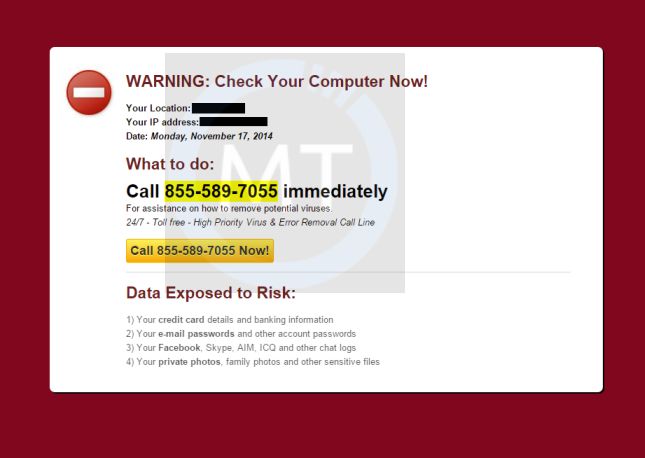This article explains how you can block or allow pop-up window ads on your Mac. Generally, pop-ups are forms of advertising. The good news is that you can easily configure your Safari browser to allow or block pop-up windows. How to block pop-ups in Safari. Pop-ups are annoying. They are unwanted. Sometimes they may slow down your computer. But pop-up windows are disabled by default in Safari for the Mac. If you’re a Safari user on the Mac and you need access to pop-up windows for whatever reason, there are several options available to enable pop-ups for websites viewed in Safari.
How to remove apps that open the service24[.]report address from Mac?
What is service24[.]report?
Typically, websites like service24[.]report are designed to trick visitors into downloading and installing some potentially unwanted application (PUA). In most cases these pages claim that a device infected with viruses and offer to remove them with a certain app. It is worthwhile to mention that users do not visit pages like service24[.]report by themselves, usually they get opened by some PUA that is installed on the operating system (and/or a browser).
Service24[.]report has at least two versions: one claiming that visitor's iPhone is infected with 3 viruses and encouraging to remove those viruses with some application that can be downloaded and installed via the provided link, another one claiming that some video cannot be played without a VPN app. The second variant offers to download an app called VPN Wolf. Websites like service24[.]report should never be trusted - virus alerts or other notifications that are displayed on them are fake, deceptive. Therefore, apps should never be downloaded from or through them. It is common that such pages are designed to promote various browser hijackers, adware-type apps or other types of PUAs. As mentioned in the introduction, in most cases browsers open pages like service24[.]report when they have some PUA installed on them.
It is common that PUAs are designed not only to promote pages like service24[.]report but also to collect IP addresses, geolocations, addresses of visited pages, entered search queries, and other browsing data. In some cases they are capable of accessing sensitive details as well. Gathered information could be sold to third parties (potentially cyber criminals) or misused to generate revenue in other ways. Additionally, PUAs can be designed to serve banners, coupons, surveys, pop-up ads, or other types of ads. Those ads tend to be designed to open questionable pages, in some cases they can cause unwanted download and/or installation by executing certain scrips.
| Name | service24.report pop-up |
| Threat Type | Phishing, Scam, Mac malware, Mac virus |
| Fake Claim | iPhone is infected with viruses, video cannot be played without a certain app |
| Detection Names | Fortinet (Spam), Spamhaus (Spam), Full List (VirusTotal) |
| Serving IP Address | 116.202.171.47 |
| Promoted Unwanted Application | VPN Wolf |
| Symptoms | Your Mac becomes slower than normal, you see unwanted pop-up ads, you are redirected to dubious websites. |
| Distribution methods | Deceptive pop-up ads, free software installers (bundling), fake Flash Player installers, torrent file downloads. |
| Damage | Internet browser tracking (potential privacy issues), display of unwanted ads, redirects to dubious websites, loss of private information. |
| Malware Removal (Mac) | To eliminate possible malware infections, scan your Mac with legitimate antivirus software. Our security researchers recommend using Combo Cleaner. |

There is a great number of untrustworthy websites like service24[.]report. Some examples are topdefence-formob[.]com, umobile-security[.]com, vpnbestapp[.]com. What most of them have in common is that they are designed to deceive visitors into downloading and installing some potentially unwanted application. Usually these pages are designed to do that by displaying notifications saying that a device is infected with viruses. Although, in some cases they use different tactics to promote PUAs. In one way or another, such pages should never be trusted.
How did potentially unwanted applications install on my computer?
Quite often developers distribute PUAs by including them in download and/or installation setups of other programs. This distribution method is known as 'bundling'. Typically, additionally included apps are mentioned in 'Custom', 'Advanced' and other similar settings of setups. Offers to download and/or install PUAs can be declined using those settings (or available checkboxes). Although, not all users check and change the aforementioned settings, which means they agree with offers to download and/or install included apps. Another way to unintentionally download or install PUAs is by clicking deceptive ads that are designed to execute certain scripts.
How to avoid installation of potentially unwanted applications?
Ads that appear on suspicious, questionable websites should not be clicked - they can be designed to open various untrustworthy websites or even to cause download, installation of some unwanted applications. Download and installation setups that include settings like 'Custom', 'Advanced' and/or some checkboxes should be checked for offers to download and or install unwanted apps. Also, it is recommended not to use third part downloaders, installers, Peer-to-Peer networks (like torrent clients, eMule), unofficial sites, and other similar channels, sources as tools to download or install any software, files. Files and programs should be downloaded from official, trustworthy websites, and via direct links. If there are any unwanted extension, plug-ins, and/or add-ons installed on a browser, then they should be removed from it. Programs of this kind that are installed on the operating system should be uninstalled too. If your computer is already infected with PUAs, we recommend running a scan with Combo Cleaner Antivirus for macOS to automatically eliminate them.
Text in the pop-up window of the main service24[.]report variant:
Attention! This video is unavailable due to your country restrictions.
Update your VPN to continue watching in safe mode.
Screenshot of the service24[.]report background page:
Text in this page (and its mobile version):
VPN Update
Please Download The Free VPN App To Continue Watching in safe mode
Screenshot the mobile version of the main service24[.]report variant:
Screenshot of the download website for the app (VPN Wolf) which is promoted via the main service24[.]report website variant:
Screenshot of another service24[.]report variant:
Text in this variant:
Apple Security
martes
13 octubre 2020
Se han detectado (3) virus en tu iPhone y la batería se ha infectado y está dañada
Si no eliminas este malware ahora, puede causar más daño a tu dispositivo. Cómo solucionarlo:
Paso 1: pulsa el botón que aparece abajo e instala de forma gratuita la herramienta de protección antivirus recomendada desde la AppleStore

Paso 2: ejecuta la aplicación para eliminar todo el malware y así reparar tu teléfono al 100 %
1 minutes and 22 seconds
Descargar e instalar
Instant automatic Mac malware removal:Manual threat removal might be a lengthy and complicated process that requires advanced computer skills. Combo Cleaner is a professional automatic malware removal tool that is recommended to get rid of Mac malware. Download it by clicking the button below:
▼ DOWNLOAD Combo Cleaner for MacBy downloading any software listed on this website you agree to our Privacy Policy and Terms of Use. To use full-featured product, you have to purchase a license for Combo Cleaner. Limited three days free trial available.
Quick menu:
- STEP 1. Remove PUA related files and folders from OSX.
- STEP 2. Remove rogue extensions from Safari.
- STEP 3. Remove rogue add-ons from Google Chrome.
- STEP 4. Remove potentially unwanted plug-ins from Mozilla Firefox.
Video showing how to remove adware and browser hijackers from a Mac computer:
Potentially unwanted applications removal:
Remove potentially unwanted applications from your 'Applications' folder:
Click the Finder icon. In the Finder window, select 'Applications'. In the applications folder, look for 'MPlayerX', 'NicePlayer', or other suspicious applications and drag them to the Trash. After removing the potentially unwanted application(s) that cause online ads, scan your Mac for any remaining unwanted components.
Combo Cleaner checks if your computer is infected with malware. To use full-featured product, you have to purchase a license for Combo Cleaner. Limited three days free trial available.
Remove service24.report pop-up related files and folders:
Click the Finder icon, from the menu bar. Choose Go, and click Go to Folder...
Check for adware-generated files in the /Library/LaunchAgents folder:
In the Go to Folder... bar, type: /Library/LaunchAgents
In the “LaunchAgents” folder, look for any recently-added suspicious files and move them to the Trash. Examples of files generated by adware - “installmac.AppRemoval.plist”, “myppes.download.plist”, “mykotlerino.ltvbit.plist”, “kuklorest.update.plist”, etc. Adware commonly installs several files with the same string.
Check for adware generated files in the /Library/Application Support folder:
In the Go to Folder... bar, type: /Library/Application Support
In the “Application Support” folder, look for any recently-added suspicious folders. For example, “MplayerX” or “NicePlayer”, and move these folders to the Trash.
Check for adware-generated files in the ~/Library/LaunchAgents folder:
In the Go to Folder bar, type: ~/Library/LaunchAgents
In the “LaunchAgents” folder, look for any recently-added suspicious files and move them to the Trash. Examples of files generated by adware - “installmac.AppRemoval.plist”, “myppes.download.plist”, “mykotlerino.ltvbit.plist”, “kuklorest.update.plist”, etc. Adware commonly installs several files with the same string.
Check for adware-generated files in the /Library/LaunchDaemons folder:
In the Go to Folder... bar, type: /Library/LaunchDaemons
In the “LaunchDaemons” folder, look for recently-added suspicious files. For example “com.aoudad.net-preferences.plist”, “com.myppes.net-preferences.plist”, 'com.kuklorest.net-preferences.plist”, “com.avickUpd.plist”, etc., and move them to the Trash.
Scan your Mac with Combo Cleaner:
If you have followed all the steps in the correct order you Mac should be clean of infections. To be sure your system is not infected run a scan with Combo Cleaner Antivirus. Download it HERE. After downloading the file double click combocleaner.dmg installer, in the opened window drag and drop Combo Cleaner icon on top of the Applications icon. Now open your launchpad and click on the Combo Cleaner icon. Wait until Combo Cleaner updates it's virus definition database and click 'Start Combo Scan' button.
Combo Cleaner will scan your Mac for malware infections. If the antivirus scan displays 'no threats found' - this means that you can continue with the removal guide, otherwise it's recommended to remove any found infections before continuing.
After removing files and folders generated by the adware, continue to remove rogue extensions from your Internet browsers.
service24.report pop-up removal from Internet browsers:
Allow Pop Ups For Mac
Remove malicious extensions from Safari:
Remove service24.report pop-up related Safari extensions:

Open Safari browser, from the menu bar, select 'Safari' and click 'Preferences...'.
In the preferences window, select 'Extensions' and look for any recently-installed suspicious extensions. When located, click the 'Uninstall' button next to it/them. Note that you can safely uninstall all extensions from your Safari browser - none are crucial for normal browser operation.
- If you continue to have problems with browser redirects and unwanted advertisements - Reset Safari.
Remove malicious plug-ins from Mozilla Firefox:
Remove service24.report pop-up related Mozilla Firefox add-ons:

Open your Mozilla Firefox browser. At the top right corner of the screen, click the 'Open Menu' (three horizontal lines) button. From the opened menu, choose 'Add-ons'.
Choose the 'Extensions' tab and look for any recently-installed suspicious add-ons. When located, click the 'Remove' button next to it/them. Note that you can safely uninstall all extensions from your Mozilla Firefox browser - none are crucial for normal browser operation.
- If you continue to have problems with browser redirects and unwanted advertisements - Reset Mozilla Firefox.
How To Block Pop-ups For Mac
Remove malicious extensions from Google Chrome:
Remove service24.report pop-up related Google Chrome add-ons:
Open Google Chrome and click the 'Chrome menu' (three horizontal lines) button located in the top-right corner of the browser window. From the drop-down menu, choose 'More Tools' and select 'Extensions'.
In the 'Extensions' window, look for any recently-installed suspicious add-ons. When located, click the 'Trash' button next to it/them. Note that you can safely uninstall all extensions from your Google Chrome browser - none are crucial for normal browser operation.
- If you continue to have problems with browser redirects and unwanted advertisements - Reset Google Chrome.
No one likes being bombarded by pop-up ads, but every once in a while you do need them. Some sites still require that you add information to a pop-up window. Or maybe you can’t view a video or page because it is being blocked by Safari’s pop-up blocker. No matter what the reason, here’s how to allow pop-ups on Safari.
How to Turn Off the Pop-up Blocker on Safari Desktop
Thefollowing method will only work for Mac desktops and laptops running Safari.

- Open Safari.
- Click “Safari” in the Apple Menu in the top-left corner of your screen. You will need to be in the Safari app to access this menu.
- Then click Preferences. You can also access Safari’s Preferences by using the Command + comma keyboard shortcut. For a list of the most useful Mac keyboard shortcuts, check out our previous article here.
- Click on the Websites tab at the top of the Preferences window.
- From the left side-bar, click on Pop-up Windows.
- Finally, click the drop-down menu in the bottom right corner of the window and select Allow. This will cause Safari to allow all pop-ups. You can also choose to block all pop-ups or notify you every time they are blocked as well.
If you don’t want to allow all pop-ups on Safari, you can set exceptions for certain websites or webpages that you currently have open. In the same Preferences window click the drop-down menu next to a website and select Allow.
Note: In order to add exceptions, you first have to choose Block or Block and Notify from the drop-down menu. Doing this will change your pop-up blocker on.
How to Allow Pop-ups on iPhone
Ifyou have an iPhone or iOS device, Safari is your default browser. If you wantto know how to block pop-ups on your iPhone or iPad, follow the steps below.
- Open the Settings app. This is an app that comes on your device and cannot be deleted. It has a gear-shaped icon.
- Scroll down and tap Safari. This will have an icon that looks like your Safari app.
- Finally, turn on the toggle next to Block Pop-ups. You will know it is on when it is green.
Now that you know how to allow pop-ups on Safari, find out how to clear the cache on your iPhone by checking out our previous article here.
Was this article helpful?
Related Articles
